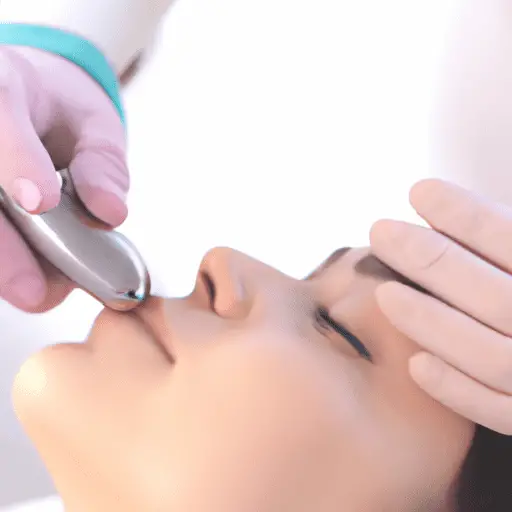Understanding Laser Resurfacing: A Guide to Enhancing Your Skin
-
Table of Contents
- Understanding Laser Resurfacing: A Guide to Enhancing Your Skin
- Key Takeaways
- Introduction: Unveiling the Power of Laser Resurfacing
- The Science Behind Laser Resurfacing
- Types of Laser Resurfacing: Ablative vs. Non-Ablative
- Potential Risks and Side Effects
- The Importance of Aftercare
- FAQ Section
- 1. Is laser resurfacing painful?
- 2. How long does it take to recover from laser resurfacing?
- 3. Can I go back to work immediately after the procedure?
- 4. Are the results of laser resurfacing permanent?
- 5. Who is a good candidate for laser resurfacing?
- Conclusion: The Power and Potential of Laser Resurfacing
- Further Analysis
Understanding Laser Resurfacing: A Guide to Enhancing Your Skin

[youtubomatic_search]
Key Takeaways
- Laser resurfacing is a popular cosmetic procedure that can improve the appearance of the skin.
- It works by removing layers of skin to promote the growth of new, healthier skin cells.
- There are two main types of laser resurfacing: ablative and non-ablative.
- While effective, laser resurfacing does come with potential risks and side effects.
- Proper aftercare is crucial to achieving the best results and minimizing complications.
Introduction: Unveiling the Power of Laser Resurfacing
Laser resurfacing is a cosmetic procedure that has gained popularity over the years due to its effectiveness in improving the appearance of the skin. It is a non-invasive treatment that uses laser technology to remove layers of skin, promoting the growth of new, healthier skin cells. This article delves into the intricacies of laser resurfacing, its benefits, potential risks, and the importance of aftercare.
The Science Behind Laser Resurfacing
Laser resurfacing works by directing concentrated beams of light at irregular skin, precisely removing skin layer by layer. This process stimulates the body’s natural healing process, leading to the production of new cells and collagen, a protein that gives skin its elasticity and firmness. The result is a smoother, younger-looking complexion.
Types of Laser Resurfacing: Ablative vs. Non-Ablative
There are two main types of laser resurfacing: ablative and non-ablative. Ablative lasers, such as the carbon dioxide (CO2) laser and the erbium laser, work by vaporizing the top layers of damaged skin. Non-ablative lasers, on the other hand, leave the skin’s surface intact, working instead on the dermis (the deeper layer of the skin) to stimulate collagen growth and tighten underlying skin. Both types have their pros and cons, and the choice between the two often depends on the patient’s specific needs and recovery time.
Potential Risks and Side Effects
While laser resurfacing is generally safe, it does come with potential risks and side effects. These may include redness, swelling, itching, and burning sensations in the treated area. In rare cases, patients may experience changes in skin color, infection, or scarring. It’s important to discuss these potential risks with a qualified professional before deciding on the procedure.
The Importance of Aftercare
Proper aftercare is crucial to achieving the best results and minimizing complications. This includes keeping the treated area clean, avoiding sun exposure, and using recommended skincare products. Following the aftercare instructions provided by your healthcare provider can significantly enhance the results of your laser resurfacing treatment.
FAQ Section
1. Is laser resurfacing painful?
Most patients report feeling a slight burning sensation during the procedure, but this is usually managed with local anesthesia or a cooling device.
2. How long does it take to recover from laser resurfacing?
Recovery time varies depending on the type of laser used and the extent of the treatment. It can range from a few days for non-ablative lasers to up to two weeks for ablative lasers.
3. Can I go back to work immediately after the procedure?
It’s recommended to take a few days off work to allow your skin to heal, especially if you’ve had an ablative laser treatment.
4. Are the results of laser resurfacing permanent?
While laser resurfacing can significantly improve the appearance of your skin, it does not stop the aging process. Regular maintenance treatments may be necessary to maintain the results.
5. Who is a good candidate for laser resurfacing?
Individuals with non-oily, non-acne-prone skin who are in good health are typically good candidates for laser resurfacing. However, it’s important to consult with a professional to determine if this treatment is right for you.
Conclusion: The Power and Potential of Laser Resurfacing
Laser resurfacing is a powerful tool in the world of cosmetic treatments, offering a non-invasive solution to a variety of skin concerns. By understanding the science behind this procedure, the different types of lasers used, and the potential risks and benefits, individuals can make an informed decision about whether this treatment is right for them. Remember, proper aftercare is crucial to achieving the best results and minimizing complications.
[youtubomatic_search]
Further Analysis
In conclusion, laser resurfacing is a promising procedure that can significantly enhance the appearance of your skin. However, it’s important to understand that it’s not a one-size-fits-all solution. Consulting with a qualified professional is crucial to determine if you’re a good candidate for this treatment and to discuss potential risks and benefits. With proper care and realistic expectations, laser resurfacing can be a powerful tool in your skincare arsenal.


